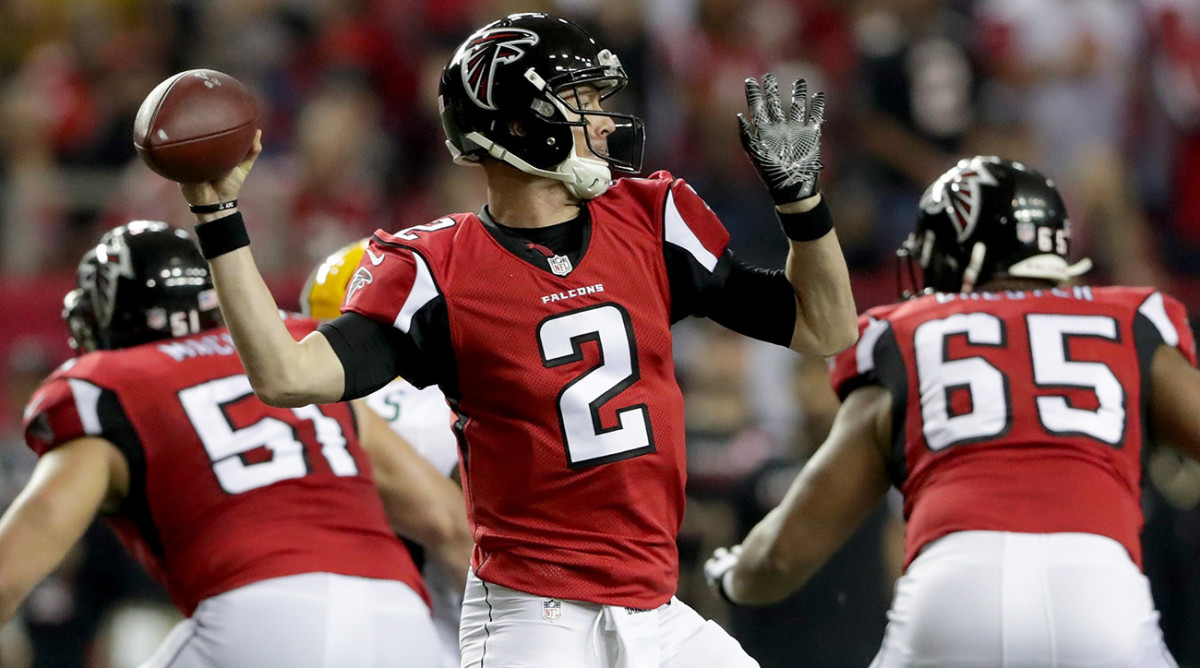Ball tracking technology opens the door for more data, innovations in NFL games
There will be bad throws at Super Bowl LI. Matt Ryan and Tom Brady might have been the two best quarterbacks in the league this season, but somewhere in those final 60 minutes of play one of them will overthrow a touchdown pass, or connect with an opposing player, or simply fail to get the ball away in time and be run down by the defensive line. The game might be decided by that one mistake.
Thanks to Zebra Technologies, we’re now able to track players’ positions in real time. Data tells us which player won a matchup, or which player was out of position. Even the referees and first-down markers are tagged with Zebra’s RFID chips—one day soon, the chains might be redundant. But, at least from a stats perspective, the ball is still invisible.
That might be about to change. Last summer, Zebra and the NFL began experimenting with putting tags inside footballs. Nothing more has come of that yet, so don’t expect to see any hard analysis of Ryan or Brady’s throws on Sunday. But away from the pro game, ball tracking is already here. If you wanted to prove you’re a better QB than your sister-in-law at your Super Bowl party, Wilson has you covered with its Wilson X football.
“We’re trying to help colleges and high schools,” says Bob Thurman, vice president of innovation at Wilson Sporting Goods. Getting data on throws might help players improve. “We’re trying to help kids go to the next level,” he says. Connected up to a smartphone via Bluetooth, Wilson’s ball measures the speed, spin rate and distance of each throw. It also gives a metric Wilson calls “spiral efficiency,” effectively measuring how wobbly a throw might be.
“How much rotation they get on the football, the spin rate of the football, is really important because it makes the ball more stable on a windier day,” Thurman says.
Get the most out of your workouts with these tips from a former pro boxer and NFL trainer
The ball can also measure a quarterback’s timing, picking up specific motions using the accelerometers and gyroscopes hidden beneath its skin.
“We know when a snap occurs,” Thurman says. “We know when the athlete has the ball in his hands, and when he separates his hands.” The time between when a player’s hands separate and the ball is released is a good measure of how quickly a quarterback can complete his throwing motion, the time before that indicates the player’s decision making abilities. Both of those can now be evaluated, and perhaps improved upon.
Integrating the sensor was relatively simple, according to Thurman. Unlike the ball’s predecessor, a connected basketball, where weight was crucial, “a football is so heavy compared to the weight of the sensor,” he says. Apart from branding on the outside of the ball, and an X formed from the laces, the ball doesn’t look or feel different to any other football.
There’s even no need to charge it, because it puts itself to sleep between throws. “We can power manage a football or basketball to create hundreds of thousands of repetitions or shots,” Thurman says. The battery will eventually run down, but not before the ball is worn out anyway. “Why recharge something that’s almost disposable itself?” asks Thurman.
The hardest part of the design, though, was ensuring the presence of the sensor didn’t upset the balance of the ball, and Wilson turned to Seahawks quarterback Russell Wilson for help on the consumer product. “When you get to the best athletes in the world,” Thurman says, “they are very sensitive to anything, and the last thing that you want when they throw a 40 yard feed ball [is them] watching the ball flutter at the top of the trajectory.”
Although Wilson is the official supplier of footballs for the NFL, pros won’t be using Wilson X in games. The ball is also not quite game ready anyway, because its Bluetooth transmitter would almost certainly struggle with interference in a stadium packed with tens of thousands of Bluetooth-enabled smart phones. The most likely ball-tracking tech to appear in game, perhaps next season or in 2018, is Zebra’s.
When that comes, expect the quest to begin for finding even more things to track.
Joe Montana’s heart disease scare has pushed him to stay fit after retirement
“We have two tags in the shoulder pads, and let’s say a tag in the ball,” says Jill Stelfox, vice president and general manager of Zebra’s Location Solutions division. “What we don’t have that is so critical to football is where your knee is down.”
Simply knowing where the ball is won’t be enough. Fans will want data to help officiating, and that means knowing where your feet are, where your knees are. Big data only makes us want bigger data.







